C1.2 - Darwin
About Darwin
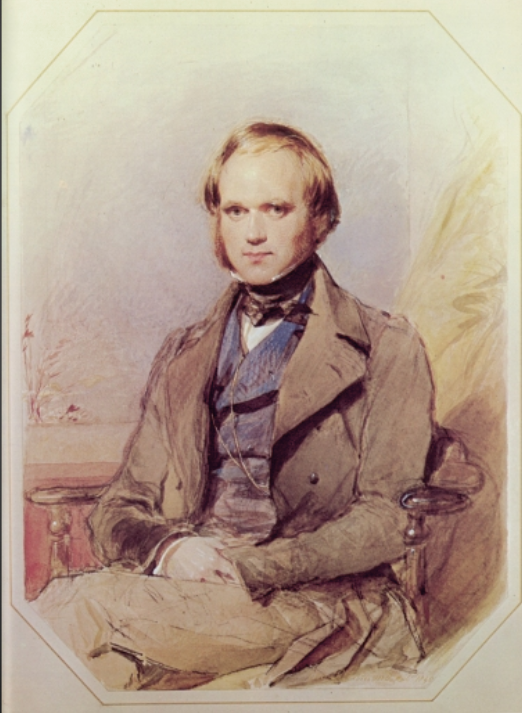
- Born 1809 in Shropshire, England
- Son of local doctor and Wedgwood (rich family) heiress
- Tried to study medicine and become a priest but…
- …found natural world more interesting
- Befriends leading naturalists
- Learns how to collect and preserve specimens
- Rich, didn’t have to work, rented out property
Voyage of the HMS Beagle
- Done on a frigate: fast, small warship
- Darwin offered job of ship’s naturalist
- 5 year trip around the world
- Captain of Beagle: Robert Fitzroy (father of meterology)
- Darwin brought Lyell’s Principles of Geology
- Journey showed difficulty on relying on Bible as unerring (errorless)
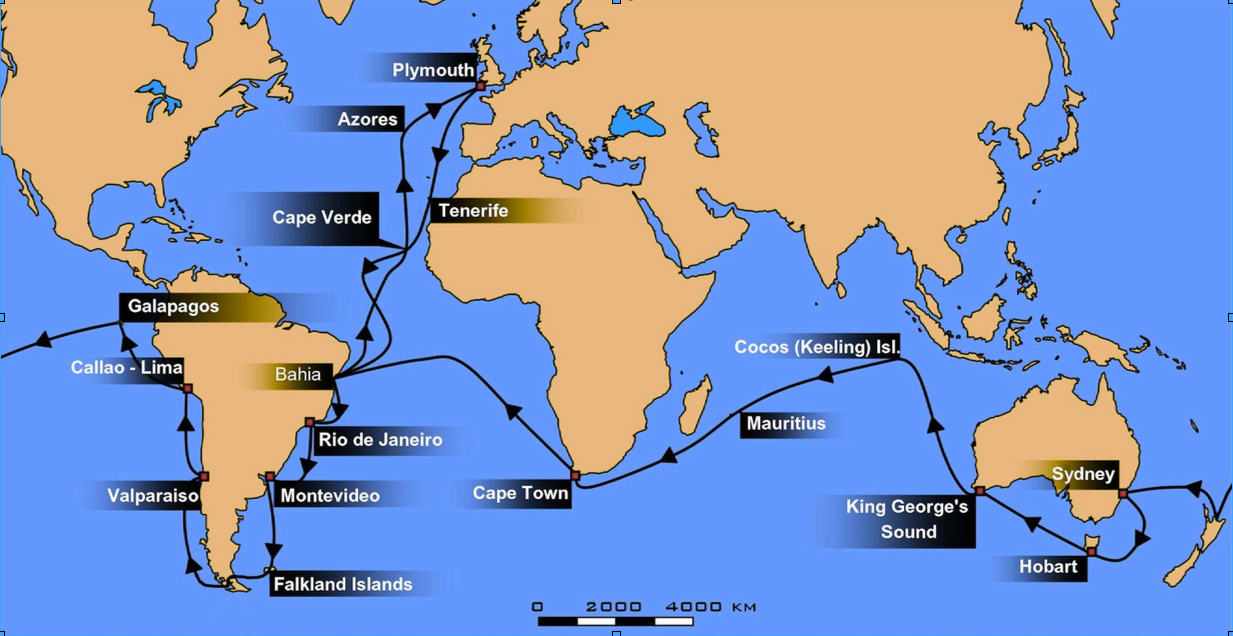
Findings from the Voyage
- Collected 1000s of speciments
- Collected fossils that resembled existing animals
- Vocanic Galpagos Islands had species similar to South American natives
- Species differed from island to island
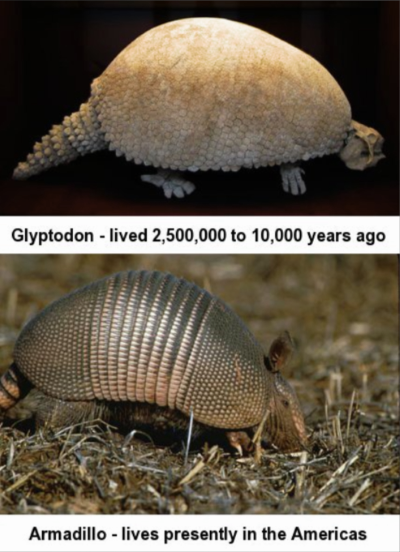
Geological Change Theory
- Darwin read Lyell’s Principles of Geology
- Personally experienced earthquake while doing field studies in the Andes Mountains of Chile
- Collected fossils of ocean organisms high up in the Andes
- Reasoned that earthquakes had gradually lifted the rock containing marine fossils above sea floor
3 Patterns in Diversity
Species Vary Globally
- Distantly related species living in similar habitats across the world acted in similar ways
- i.e. flightless birds: rheas (South America), emus (Australia), ostriches (Africa)
- These species live in grasslands
- Some areas have unique organisms not found anywhere else in world
- i.e. Australia is exclusive home of kangaroos and other marsupials
- marsupial: pouched animals
- Species are distinct from other species in different area
- i.e. tropical South American lizard more similar to desert S.A. lizard than tropical African lizard
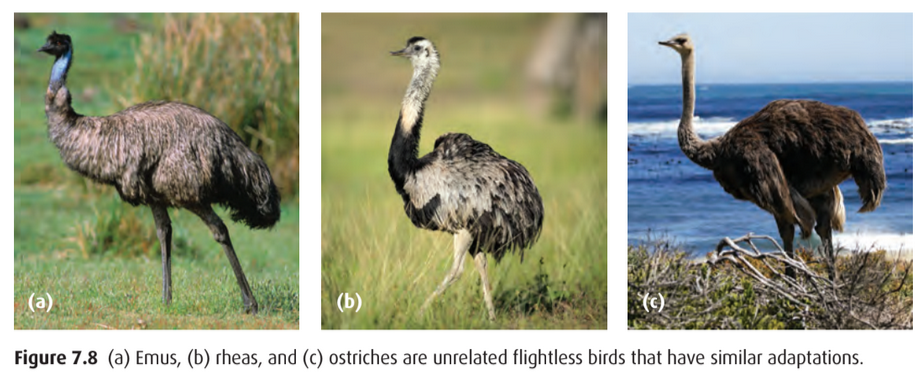
Species Vary Locally
- Related species in different habitats of a local environment had different traits
- Most obvious on islands like the Galapagos Islands
- Islands rising farther above sea level have greater rainfall, like Isabela Island
- Tortoises in Isabela Island have short necks to reach sparse vegetation on the ground
- Española Island tortoises have long necks to reach vegetation above ground
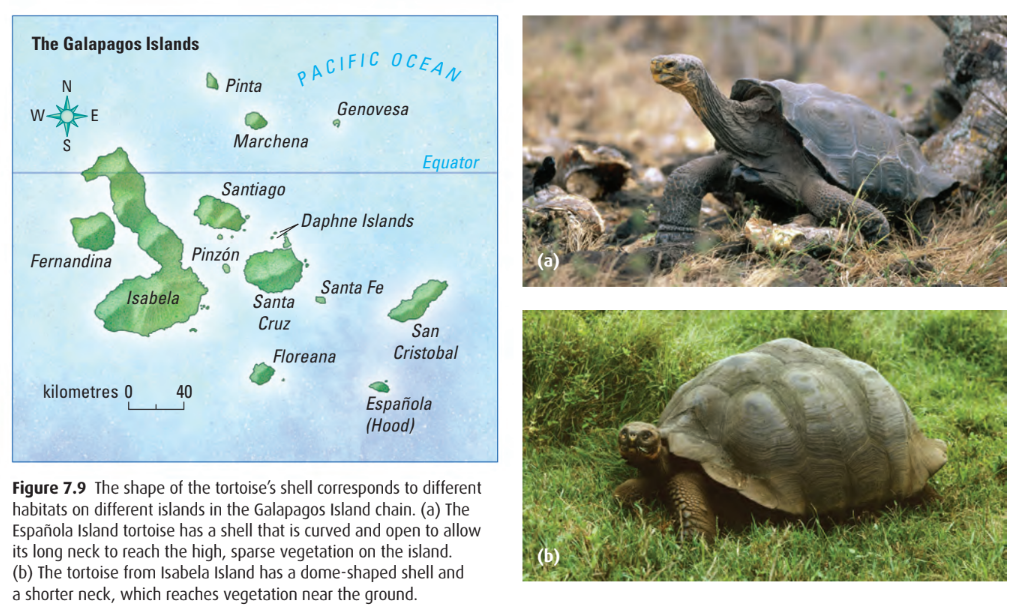
Species Vary Over Time
- Fossils discovered of ancient species
- Fossils found by Darwin uniquely South American; some were giant versions of present-day animals
- i.e. Glyptodon evolved to become smaller that resulted in the present-day armadillo

Darwin’s Finches — Patterns in Diversity
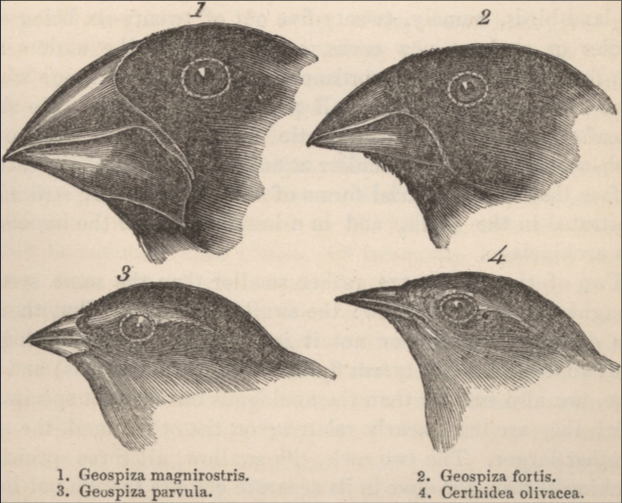
- Large beak to crack hard to open nuts
- Smaller beak to crack small nuts or seeds
- Even smaller beak for small seeds or insects
- Tiny beak to eat insects and bugs
- Collected on the Galapagos
- Beaks changed to suit food source
- Descended from mainland ancestor
- Different species found on separate islands
- New species branch out from old ones
Darwin’s Early Tree of Life
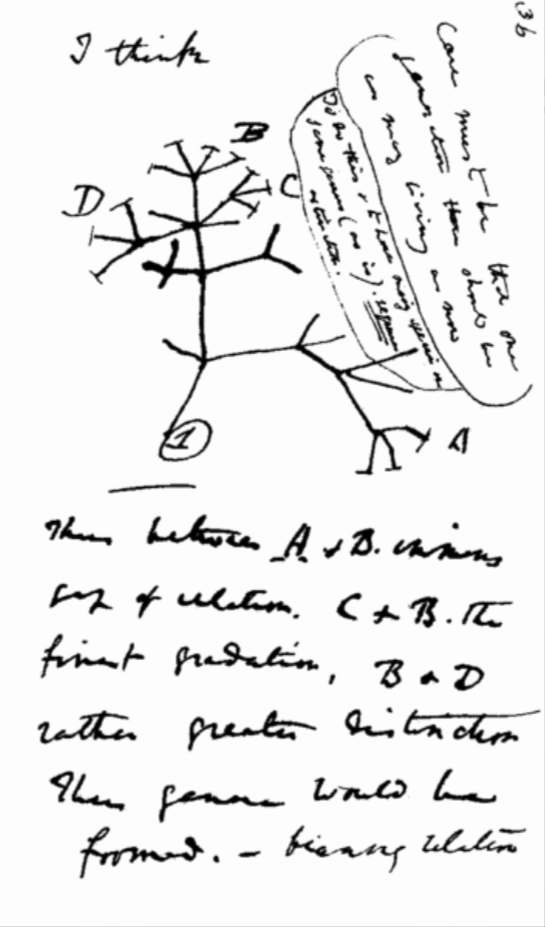
Comparative Anatomy: Homologous and Analogous Structures
- homolgous structures: similar structures found in different organisms that share a common origin
- share a more recent common ancestor
- i.e. forelimbs of vertabrates like human hand and whale flipper
- analogous structures: different structures that perform the same function
- does not share similar origin or structure
- i.e. bird and bee wing
Homologous
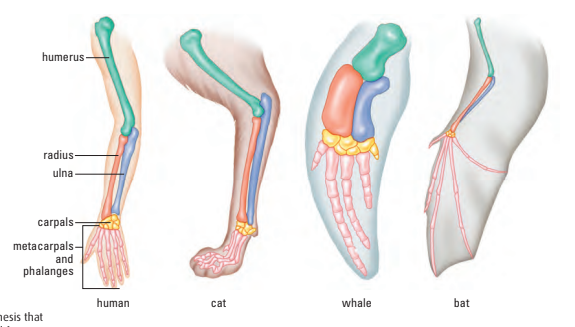
Analogous
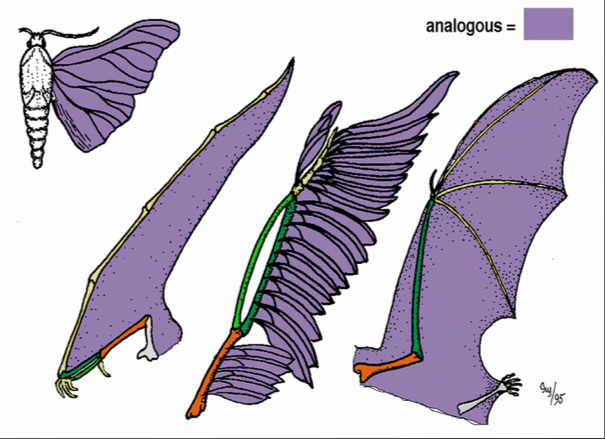
Vestigial Structures
- Rudimentary non-functioning structures that are present in reduced form
- Had importance in the past
- Changing environ. no longer favours selection
- i.e. whale pelvis, appendix (questionable)
Artificial Selection
Dove, variant of pigeon that won’t be favoured in the wild
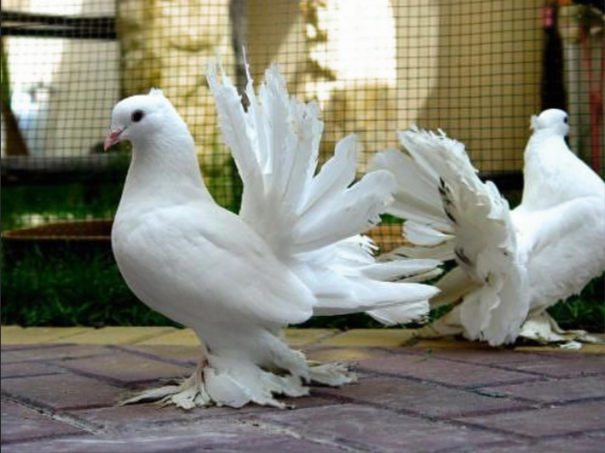
- Darwin searches for examples of selection pressures among domestic animals
- Artificial selection breeds pigeons (or other animals) for certain traits
- Selected traits can be bred in relatively few generations
- Environment providces selection pressure in the wild
Dove is white, has easy to see fantail, and its feathery tail can pick up droppings and cause infections.
Struggle for Survival / Existance + Malthus’s Essay on the Principle of Population
Questionable: Also known as: “survival of the fittest” :question:
- Based on Thomas Malthus’s Essay on the Principle of Population
- more individuals are born than the environment can handle
- population grows faster than the rate at which food and supplies can be produced
- human suffering due to humans’ potential to grow
- too many people and too few resources lead to war, famine, and disease
- Organisms produce more offspring than are able to survive
- Favourable variations tend to be preserved
- Unfabourable variations die out
Natural Selection, Descent with Modification, and Survival of the Fittest
- descent with modification: species accumulated different adaptations and passed these on to better suit their environment
- a.k.a. “evolution”
- natural selection is also called “evolution”
- fitness: an indiviudal’s ability to survive and reproduce in its specific environment
- survival of the fittest: individuals with adaptations that increase their fitness survive and pass on their genes to future gens.
- Darwin works on his theory
- Darwin works meticulously for years to build a case for his theory
- Publishes On the Origin of Species in 1859
- Individuals vary in population
- Favourable variations result in traits being passed on
- Survival is not random
- Sheer weight of Darwin’s evidence made theory hard to counter
- Misconceptions
- Natural selection does not select traits that are “better”
- Natural selection has no goal
- The adaptation that works best in the specific environment is favoured
Sources
- Mr. C. Jones
- BiologySource 11